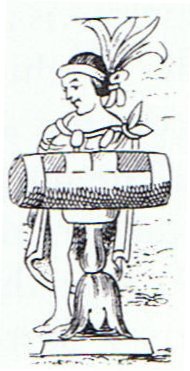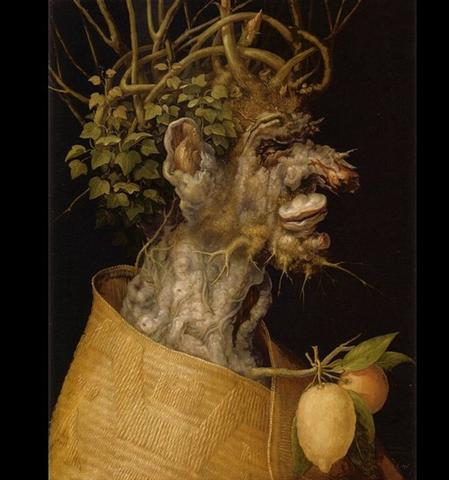For the beginning of side b I would like to start my discussion with the 'owl' (Moan):
I cannot avoid thinking of the early cultural contacts which probably once were established between the Polynesians and the Mayas. ... The Gilbert Islanders are Polynesians, having emigrated, according to their traditions, from Upolu, Samoa, which they look upon as te buto (Maori pito), the Navel of the World. They never counted the nights of the Moon beyond the twentieth, so far as Grimble was able to ascertain, and in the vagueness of their lunar calendar bore no resemblance to their Micronesian neighbors of the Carolines ... One of the names for east, Makai-oa, was said to be the name of a far eastern land, not an island, which their navigators had visited in ancient times. Tradition called this great land 'the containing wall of the sea, beyond the eastern horizon, a continous land spreading over north, south, and middle, having a marvelous store of all sorts of food, high mountains and rivers'. It was also called Maia-wa (wa being 'space, distant'). This is a clear reference to ancient voyages to the American coast from which the Polynesians are thought to have introduced the sweet potato into the Pacific area. The similarity of Maia to Maya may be more than a coincidence ... It is rather farfetched, but moan is a bird name which resembles moa (and I have seen a handful of other similar parallel technical terms between Polynesian and the Mayan languages):
In Cb1-11 the closed beak together with the upside down right hand tail feathers probably together constitute a Sign which determines the opposite of the normal moa ohoa (as I ought to have named the glyph type rather than simply moa) who was shouting in the early 'morning' to greet the rising Sun. From Zotz to Moan there should be (15 - 4) * 20 = 220 days, about a month longer than half a year. Beyond Moan comes the first of the 2 drum months, viz. Pax:
This was the reason I thought Metoro's rutua te pahu could indicate the beginning of autumn, which on Easter Island should be not in October but rather in April. The position ought to be 3 * 20 = 60 days before the end of the year and 117 (April 27) + 60 = 177 (= 6 * 29½) = June 26 (where 62 * 6 = 372):
My main point is though the following: I have chosen to arrange my presentations with a heliacal view at the top register and the opposite (nakshatra) view at bottom. This was natural because our RA map for the stars is based on spring equinox in March 21 = 0h (ridiculously still named the First Point in Aries). Later I came to adopt another idea, viz. that the stars in the bottom register (those which could be seen in the night close to the Full Moon) connected to a more practical way of determining the position of Sun in relation to the stars in his background - the Hindu nakshatra method. For instance should the upside down right hand tail feathers in Cb1-11 mean 'no Sun', i.e. they should relate not to the heliacal April stars but to the stars in October - which could be observed in the April nights close to the Full Moon. Then I had an additional idea, viz. that the top part of a glyph could reflect the season north of the equator (the heliacal season) and the bottom part the season south of the equator (the nakshatra season). If such was the case, then I had to keep the April and the October stars in parallel in my text presentations. However, Cb1-11 could prove I was wrong. The closed beak indicates autumn (late October for those living north of the equator and late April for those living on Easter Island). Unless I have misinterpreted the open hand tail feathers 'in the southwest' (toga) as another picture of autumn.
Perhaps I should look sideways instead of vertically (in time rather than in space). In Cb1-10 there is an open fist at top in front emerging from the bottom part of henua (earth down south). In October 27 there is a 'fruit' in front. The dormant winter will produce a new generation. I.e., Cb1-10 could refer to the season south of the equator - underlining the positive result in front - while Cb1-11 could refer to the season north of the equator - with summer closing down 'its mouth' after 300 days of high sky. | ||||||||||||||||||||||||||||||||||||||||||||||||||||||||||||||||||||||||||||||||||||||||||||||||||||||||||||||||||||||||||||||















